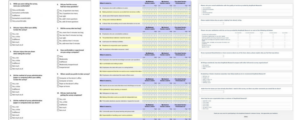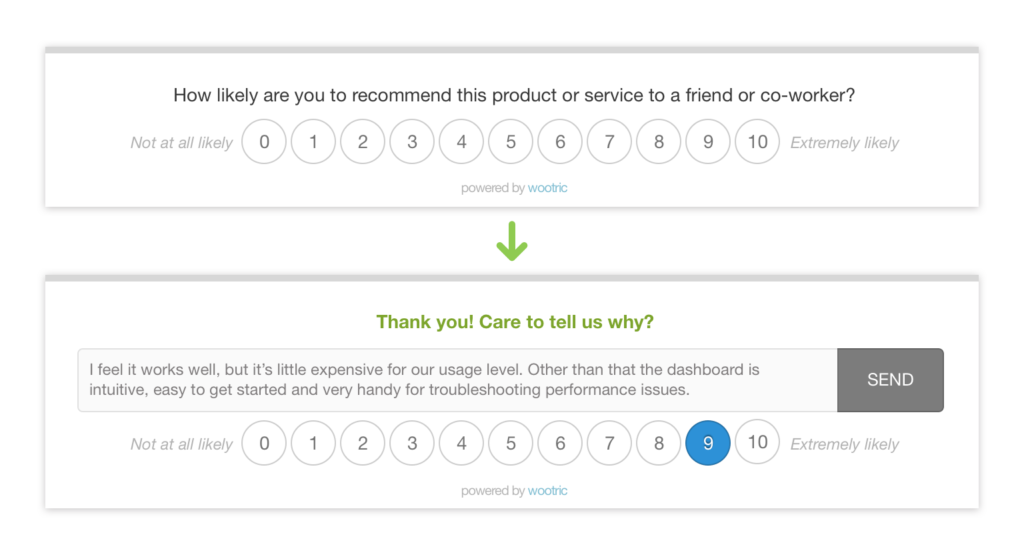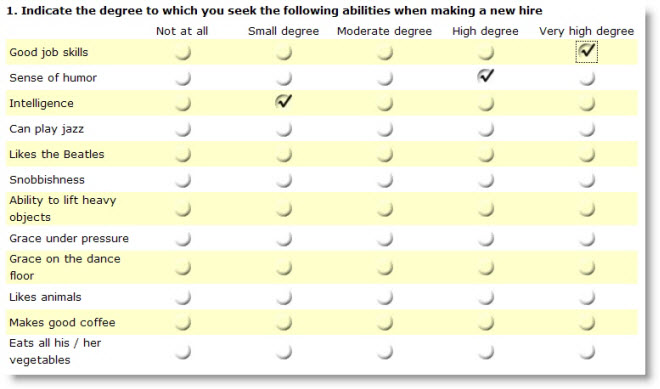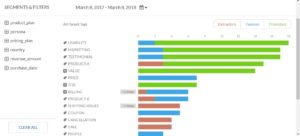Why You Should Abandon Long Customer Surveys (and Use Always-On Microsurveys Instead)

When was the last time you completed the long survey you ask your customers to fill out? This is a painfully obvious (and obviously painful) exercise you can do to assess the customer experience of your surveys. If the survey is long, you will probably find it a boring, tedious task to parse and answer the questions. Impatience grows as you face a seemingly endless list of attributes to assess.


If this is what you are subjecting your customers to, know that you aren’t alone. Many companies are content with the status quo of traditional, bi-annual, 10+ question surveys, or they simply aren’t aware of alternatives.
But times have changed — and your customers aren’t having it.
Traditional, long surveys are a lose-lose situation
Not only do multi-question surveys have the potential to irritate customers, they have disadvantages for business as well.
You are not hearing from enough customers. Completion rates are abysmal. Studies show that the longer a survey is, the higher the chance of decreased, delayed, hasty or slapdash responses. So, the information you are getting from customers who are willing to run this gauntlet may not be thoughtful.
Not hearing from customers often enough. Surveying once or twice a year means you can only react to feedback once or twice a year! In a quickly changing market, this is unacceptable. More agile competitors are going to leave you in the dust.
What can you do to solve this lose-lose situation? Modernize your feedback methodology with microsurveys.
What is a microsurvey?
Microsurveys take a well established, standardized question and use it as the first in a two-step survey. This first question can be used to measure Net Promoter Score, Customer Satisfaction Score, and Customer Effort Score, providing you with quantitative feedback. The second step then provides a way for respondents to give open-ended feedback explaining their score.
Here is an example using an NPS microsurvey shown to a customer who is logged into a SaaS application. A similar microsurvey can also be delivered via email, mobile, or SMS.

Your first reaction might be “How can I possibly get all the information I need with such a short, open-ended survey? And, how can I make sense of all of the qualitative responses?
Let us walk you through how you can get what you need — and more.
Advantages of always-on microsurveys
Microsurvey design looks at feedback collection from the customer’s point of view — it should be easy, fast, and relevant. The results are a significantly improved customer experience. Microsurveys provide three key benefits to you:
- Real-time trends
- High response rates
- Better insights
Real time so you never miss a trend:
With support of a customer experience software platform, it becomes easy to survey customers throughout the customer journey. You can forgo your annual survey campaign and get a on-going pulse of real-time feedback on journey points. Shortening your surveys allows you to ask customers for feedback more often. By asking the right question at the right time, you increase the chance that an individual will respond to your surveys. Deploying microsurveys across the entire customer journey will bring you both a bird’s eye view of the health of your account and detailed, actionable insights at each touchpoint.
High response rates means you hear from more customers:
Response rates can be as high as 60% for microsurveys, and typically exceed 25%. These numbers can seem miraculous compared to the significantly lower rates that long-form surveys attain. By asking a single question in the right channel at the right time, customer are more willing to give feedback.
Better insights:
Microsurvey responses will reflect what is important and relevant to your customers. Because you are no longer leading the respondent, you will learn things you wouldn’t otherwise learn. The qualitative feedback you receive is rich with context and potential to drive your business priorities.
Now, all of this may sound good but there are still barriers to making the switch, right?
Reasons why you are still using long form surveys
I can’t aggregate survey results when feedback is open-ended!
The advantage of endless Likert scale questions is that responses on a wide range of topics and attributes can be tallied and metricized. This makes things easier for you on the back end. However, every time a customer must chose a response from a range of values, you are putting the onus of quantification on him or her. You risk asking them to evaluate something they do not know or care about. Response quality, completion rates, and customer experience all suffer.

A modern approach is to save your scale questions for established CX metric questions like Net Promoter Score, “How likely are you to recommend [business] to friends and colleagues?”, and take the support of machine learning technology to quantify opened survey responses.
Today, you can take the burden of quantification off of customers and place it squarely on machine learning software. In the past, getting insights from large quantities of qualitative data has been hard, if not impossible. Technology is now available to auto-categorize all of that rich, qualitative feedback. Auto-tagging and sentiment analysis have come a long way!
For example, this dashboard screenshot shows an analysis of auto-categorized NPS feedback. Auto-tagging reveals themes in qualitative comments so you can know what promoters, passives and detractors are talking about in real time.

I need to ask a series of questions to get important information from our customers.
Every question you add is less likely to be answered with your respondent’s full attention and engagement. Asking a single scale question and an open ended question captures high quality data that is both qualitative and quantitative.
It feels counterintuitive to open up feedback to be a free-for-all; however, customers want to tell you what’s on their mind at the time you survey them. Asking exclusively about what is important to you is frustrating for the customer. Like the saying goes, you can lead a horse to water, but you can’t make it drink.
Getting the information you want is less obtrusive if you send customers a short survey at the right time. For example, you can send an microsurvey asking about how easy a transaction was to complete or how easy a feature was to use. Customers no longer have to reach into the depths of their memory to retrieve their impressions because they just completed the task you are asking about.
Asking for feedback at touch points over time, in the right context, creates a story of your customers’ journey and allows you to see trends, just like how thousands of photos can be combined to create beautiful stop-motion animation.
Beware of using incentives to make up for poor response rates, you will find a higher percentage of “satisficers”, or respondents who select answer options quickly and thoughtlessly to get to the incentive you promised them for “completing” their survey.
Of course, there is a time and place for long surveys.
There is nothing wrong with using a lengthy survey when you really need to — and there will be times when an in-depth questionnaire is appropriate. Here are two examples:
Annual “Brand” survey. Our customers use microsurveys to keep a finger on the pulse of their entire customer base throughout the year for customer journey feedback. Some also use an annual brand survey that supplements by asking many in-depth questions. Even though response rates for this survey may be low, they know they will hear from their most engaged customers on a variety of topics. And, with their microsurvey program, they still get feedback from everyone else.
User interviews. Product teams may conduct focus groups or interviews to get more sophisticated feedback on feature use, build out an understanding of use cases, and create detailed personas. Microsurveys such as NPS help narrow down who should be included in these focus groups and who would be open to being interviewed.
How to start? Shift your Net Promoter Score program to microsurveys.
If you want to try real-time microsurveys as a baby step towards modernizing your feedback program, use always-on NPS microsurveys as one component of your feedback strategy. You’ll still send out your long, in-depth survey to decision makers like you always have, but now with an early warning system to help you proactively keep your most important accounts.
Entelo was able to double their survey response rate with this method, using NPS microsurveys for a better understanding of customer health. The real-time feedback also meant fewer surprises and easier prioritization when it came to addressing customers’ problems.
Get the ebook, The Modern Guide to Winning Customers with Net Promoter Score. Learn how to modernize your feedback program for growth and higher loyalty.